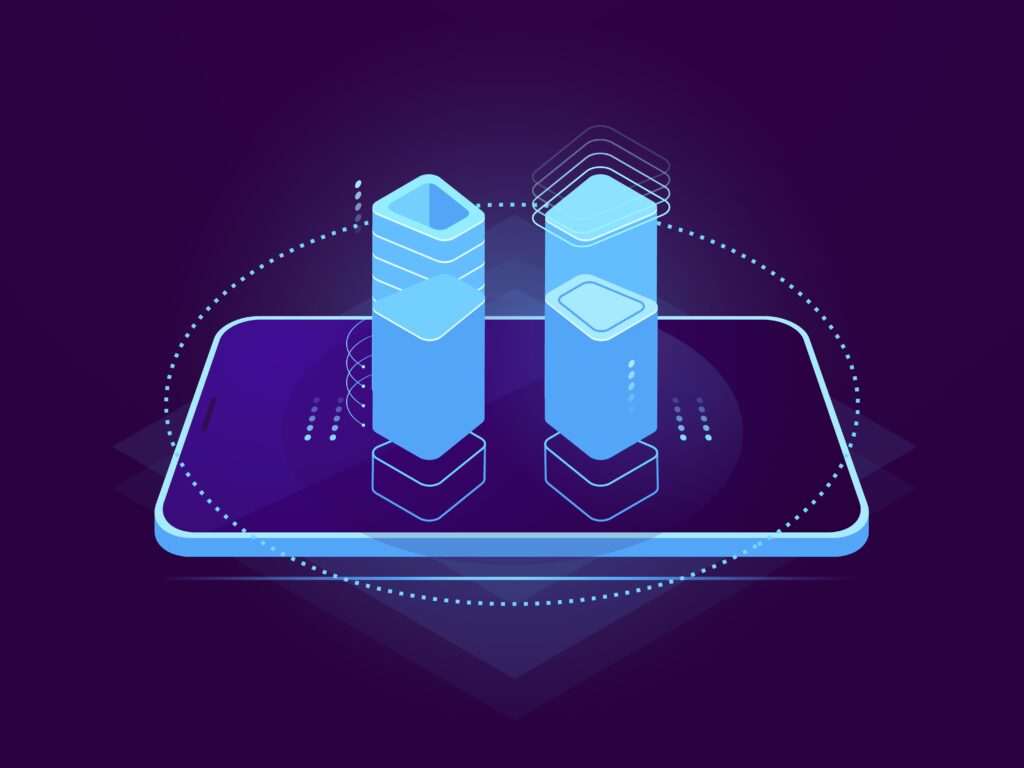Introduction
Edge computing is revolutionizing how data is processed, stored, and managed by bringing computational resources closer to data sources. However, as this technology evolves, it brings with it a variety of security challenges that businesses must address to ensure data integrity, privacy, and operational efficiency.
The primary advantage of edge computing lies in its ability to minimize latency by reducing the distance data must travel. Traditional cloud computing models rely heavily on centralized data centers, which can cause delays in data processing and increased vulnerability to single points of failure. By processing data closer to its source, edge computing offers faster insights and improved responsiveness, which is especially critical in applications like autonomous vehicles, industrial IoT, and healthcare systems.
Despite its advantages, edge computing introduces a unique set of security concerns. The sheer number of connected devices and distributed endpoints significantly increases the attack surface for potential cyber threats. These devices often operate in remote or less secure environments, making them more susceptible to unauthorized access, malware, and physical tampering.
Another challenge is the inconsistent implementation of security measures across different edge nodes. Unlike centralized systems, where uniform security protocols are easier to enforce, edge environments often involve a mix of hardware and software solutions from different vendors. This lack of standardization complicates security management and monitoring.
Furthermore, edge computing generates massive volumes of sensitive data that need to be protected both during transmission and storage. Ensuring end-to-end encryption and maintaining data privacy compliance with global regulations, such as GDPR, adds another layer of complexity to edge security.
Businesses looking to adopt edge computing must prioritize security from the outset, incorporating robust authentication mechanisms, encryption techniques, and regular security audits. By proactively addressing these challenges, organizations can fully leverage the benefits of edge computing while safeguarding their data and systems.

What is Edge Computing?
Edge computing refers to a distributed IT architecture where data is processed near its source rather than relying on a centralized data center. This reduces latency and improves real-time decision-making.
In traditional cloud computing, data is sent to centralized data centers, often located far from the data source. This can cause delays, especially for applications requiring real-time responses, such as autonomous vehicles, industrial machinery, or remote healthcare devices. Edge computing addresses this challenge by placing computational resources closer to the source of data generation, minimizing the distance data needs to travel.
Another critical aspect of edge computing is its ability to reduce bandwidth usage. With the ever-growing volume of data generated by IoT devices and other connected technologies, transmitting all data to the cloud can strain network resources and increase operational costs. By processing data locally at the edge, only essential information is sent to the cloud, optimizing both bandwidth and efficiency.
Edge computing also enhances reliability. In scenarios where connectivity to the central cloud is disrupted, edge devices can continue functioning autonomously, ensuring uninterrupted operations. For example, an autonomous vehicle cannot afford to lose connection while navigating busy streets; edge computing allows it to make split-second decisions locally.
Overall, edge computing is not just about speed and efficiency—it’s also about resilience, scalability, and adaptability. It’s a technology designed to support the increasing demands of modern applications and industries while addressing the limitations of traditional cloud-based architectures. As edge computing continues to evolve, it will play a vital role in the next generation of smart devices, real-time analytics, and mission-critical systems.
Why is Edge Computing Gaining Popularity?
- Faster data processing
- Reduced bandwidth usage
- Enhanced real-time decision-making
- Improved user experience
The Security Landscape of Edge Computing
Edge computing introduces new vulnerabilities and security risks due to its decentralized nature.
1. Data Privacy and Protection
- Data often travels across multiple nodes.
- Increased exposure to unauthorized access.
2. Insecure Devices at the Edge
- IoT devices are often poorly secured.
- Limited processing power for encryption.
3. Lack of Standardized Security Protocols
- Inconsistent protocols across different edge devices.
Common Threats in Edge Computing
1. Data Breaches
Sensitive data is at risk during transmission and storage.
2. DDoS Attacks
Attackers can exploit edge nodes to disrupt operations.
3. Malware and Ransomware
Malicious software can spread across connected devices.
Best Practices for Enhancing Edge Security
1. Strong Encryption Methods
Data should be encrypted during transit and at rest.
2. Regular Security Audits
Frequent audits help identify vulnerabilities.
3. Zero-Trust Architecture
Every device and user must be verified before access.
Role of Artificial Intelligence in Edge Security
AI can predict threats, detect anomalies, and improve real-time threat response.
Artificial Intelligence (AI) plays a critical role in enhancing edge security by providing advanced tools to detect and respond to potential threats. AI-driven security solutions analyze vast amounts of data generated by edge devices in real-time, allowing for the early detection of anomalies or suspicious behavior. These systems can predict potential breaches before they happen and automatically take corrective action.
Moreover, AI-powered threat intelligence platforms can identify patterns in cyberattacks across distributed networks, enabling more proactive security measures. Machine learning algorithms improve over time, continuously refining their ability to recognize both known and emerging threats.
AI also strengthens identity verification and access controls on edge devices. Biometric authentication, facial recognition, and behavior-based authentication methods powered by AI make it significantly harder for unauthorized users to gain access.
In addition, AI streamlines the management of security protocols across decentralized edge networks. Automated updates, patch management, and consistent monitoring reduce human error and improve overall resilience against cyber threats.
As edge computing grows, the integration of AI will become even more vital for addressing the increasing complexity and scale of edge security challenges.
Future Trends in Edge Computing Security
As edge computing continues to grow, ensuring robust security mechanisms is crucial. With its decentralized nature, edge computing brings security challenges that need to be addressed to ensure safe data processing at the network’s edge. In this article, we will explore the emerging trends in edge computing security, focusing on AI and machine learning integration, blockchain technology for secure transactions, and advanced authentication mechanisms.
AI and Machine Learning Integration for Enhanced Security
AI and machine learning are becoming indispensable tools in edge computing security. These technologies enable real-time threat detection and response by analyzing vast amounts of data at the edge. Machine learning models can be trained to recognize unusual patterns, making it easier to identify potential security breaches before they escalate.
With the power of AI, edge devices can autonomously detect anomalies and take corrective actions, reducing the reliance on human intervention. This integration also helps improve system resilience by allowing predictive analytics to anticipate potential vulnerabilities and address them proactively. In the future, we can expect edge devices to become smarter, leveraging AI to continuously improve their security posture.
Blockchain Technology for Secure Transactions
Blockchain technology is gaining traction in edge computing due to its ability to provide secure, immutable transactions. By using decentralized ledgers, blockchain ensures that data integrity is maintained across distributed edge devices. This technology prevents unauthorized tampering and ensures that all interactions between edge devices are secure.
One of the most promising applications of blockchain in edge computing is in IoT security. IoT devices, often used in edge computing, are vulnerable to attacks such as data breaches and unauthorized access. By incorporating blockchain into these systems, transactions can be securely recorded, and devices can be authenticated, reducing the risk of cyberattacks.
Advanced Authentication Mechanisms
Authentication is a critical aspect of securing edge computing environments, and advanced methods are being developed to strengthen this process. Traditional authentication methods, such as passwords and PINs, are not sufficient for the decentralized nature of edge computing. In response, biometric authentication, two-factor authentication (2FA), and behavioral biometrics are becoming the new standards.
Biometric authentication, including facial recognition and fingerprint scanning, provides a higher level of security by ensuring that only authorized users can access edge devices. Similarly, 2FA adds an extra layer of protection by requiring users to provide two forms of identification. As edge devices proliferate, these advanced authentication mechanisms will play a pivotal role in ensuring secure interactions between users and devices.
Conclusion
Edge computing is undoubtedly a transformative technology, but it also introduces a set of unique security challenges. By implementing robust security measures, businesses can harness the power of edge computing without compromising data security.
In today’s digital age, where data is the new currency, edge computing serves as a critical pillar for innovation and efficiency. However, security cannot be an afterthought. Organizations must view security as an ongoing process, involving continuous monitoring, updating, and training. Collaboration between technology providers, security experts, and businesses is essential to create a cohesive and secure edge ecosystem.
Additionally, adopting advanced technologies such as AI, blockchain, and zero-trust architectures can significantly enhance the resilience of edge systems. These tools not only address existing threats but also prepare networks to withstand future challenges.
Ultimately, businesses that prioritize security in their edge computing strategies will be better equipped to unlock its full potential, driving growth, innovation, and competitive advantage in a rapidly evolving digital landscape.
FAQs
1. What is Edge Computing in simple terms?
Edge computing processes data closer to its source rather than in a central data center.
2. Why is security a concern in Edge Computing?
The decentralized nature of edge computing exposes problems.
3. How can businesses secure their edge devices?
Through encryption, regular audits, and zero-trust architecture.
4. What role does AI play in edge security?
AI helps detect, prevent, and respond to security threats in real-time.
5. What are future trends in Edge Computing security?
AI, blockchain technology, and advanced authentication systems.

